Ten Notable Apocalypses That (Obviously) Didn’t Happen
Apocalyptic predictions are nothing new—they have been around for millennia
/https://tf-cmsv2-smithsonianmag-media.s3.amazonaws.com/filer/the-end-is-near-apocalypse-631.jpg)
1. The First Warnings From Assyria
An Assyrian clay tablet dating to around 2800 B.C. bears the inscription: “Our Earth is degenerate in these later days; there are signs that the world is speedily coming to an end; bribery and corruption are common; children no longer obey their parents; every man wants to write a book and the end of the world is evidently approaching.”
The world didn’t end (just look around), and despite the plague of corruption and petulant teenagers, four centuries later the Assyrians would establish an empire that eventually encompassed most of the Near East. The Assyrian Empire came to an abrupt end in 612 B.C., when its capital was attacked by the Babylonian army. Still, by the standards of ancient empires, 18 centuries wasn’t such a bad run.
2. Crusaders’ Concerns
Pope Innocent III relied upon apocalyptic theology in his efforts to rally Europe to launch a fifth crusade to capture Jerusalem and the rest of the Holy Land from the Ayyubid Empire. He identified the rise of Islam as the reign of the Antichrist—whose defeat would usher in the Second Coming.
In 1213, Innocent III wrote: “A son of perdition has arisen, the false prophet Muhammed, who has seduced many men from the truth by worldly enticements and the pleasures of the flesh… we nevertheless put our trust in the Lord who has already given us a sign that good is to come, that the end of this beast is approaching, whose number, according to the Revelation of Saint John, will end in 666 years, of which already nearly 600 have passed.”
The predicted date was 1284. Seven years later, the last crusader kingdom fell, when the Sultan Khalil conquered the city of Acre, in present-day Israel. The rest of the world, however, remained intact.
3. Botticelli Paints His Fears
The Renaissance is remembered as a golden age of art and learning, but the era also marked a resurgence in apocalyptic prophecies. The reason? “Advances in time keeping and in astronomy encouraged standardization of the calendar,” writes David Nirenberg, a professor of medieval history at the University of Chicago, “while a string of calamities (from the European point of view], such as the Turkish conquest of Constantinople… fomented a new numerological apocalyptic interest.”
Expectations of the apocalypse found their expression in the art of the period—most famously in The Mystical Nativity, painted by Italian Renaissance master Sandro Botticelli. The lower part of the painting depicts several small devils wedged under rocks or pinned to the ground, while a Greek inscription offers this gloomy prediction: “I, Sandro, painted this picture at the end of the year 1500 in the troubles of Italy in the half time after the time according to the eleventh chapter of St. John in the second woe of the Apocalypse in the loosing of the devil for three and a half years. Then he will be chained in the twelfth chapter and we shall see him trodden down as in this picture.” (That would place the apocalypse at around A.D. 1504.)
Art historians believe that Botticelli was influenced by the sermons of Girolamo Savonarola—a Dominican monk who urged both rich and poor alike to repent for their sins and renounce worldly pleasures. Certain that the apocalypse was near, Savonarola predicted, “the sword of the Lord will come upon the earth swiftly and soon” in the form of war, pestilence and famine.
4. The Germanic Flood That Never Came
In 1499, the German mathematician and astronomer Johannes Stöffler predicted that a vast flood would engulf the world on February 20, 1524. (His calculations foretold 20 planetary conjunctions during this year—16 of which would take place in a “watery sign,” a.k.a. Pisces.)
In Europe, more than 100 different pamphlets were published endorsing Stöffler’s doomsday prophecy. Business boomed for boat-builders, not least for German nobleman Count von Iggleheim, who constructed a three-story ark on the Rhine.
Although 1524 was a drought year in Europe, a light rain did fall on the designated day. Crowds of people—hoping to gain a seat on Iggleheim’s ark—began to riot. Hundreds were killed and the count was stoned to death.
Stöffler later recalculated the actual date to be 1528, but by then his reputation as a soothsayer had been ruined. That’s kind of a shame because, according to a story told in 1558 by German historian Hieronymus Wolf, Stöffler once predicted that his life would be endangered by a “falling body.” He chose to spend that day indoors, where, during a discussion with friends, Stöffler reached to grab a book from a shelf, which came loose and smashed him on the head, seriously injuring him.
5. Black Skies Over New England
At 9 a.m. on May 19, 1780, the sky over New England was enveloped in darkness. An 1881 article in Harper’s Magazine stated that, “Birds went to roost, cocks crowed at mid-day as at midnight, and the animals were plainly terrified.”
The unnatural gloom is believed to have been caused by smoke from forest fires, possibly coupled with heavy fog. But at the time, some feared the worst. “People [came] out wringing their hands and howling, the Day of Judgment is come,” recalled a Revolutionary War fifer.
The “Dark Day” ended at midnight, when the stars once again became visible in the night sky. But lingering concerns about a pending apocalypse prompted some people to seek out an obscure Christian sect—the Shakers—who had recently settled near Albany, New York. A splinter of the Quaker movement, the Shakers preached complete celibacy as the true path to redemption. The Shakers knew an opportunity when they saw one and embarked on a 26-month mission throughout New England, which brought them hundreds of converts.
The most famous individual to emerge from the “Dark Day” was Abraham Davenport, a member of the Connecticut legislature, which was in session when the sky blackened. Members of the legislature, fearing the apocalypse had come, moved for adjournment. Davenport is said to have responded: “The day of judgment is either approaching, or it is not. If it is not, there is no cause of an adjournment; if it is, I choose to be found doing my duty. I wish therefore that candles may be brought.” The New England poet John Greenleaf Whittier commemorated Davenport in a poem first published in the Atlantic Monthly in 1866.
6. Finding Omens in the Great Pyramid of Giza
A.D. 1881 was a banner year for apocalyptic expectations. For starters, there was the prediction of “Mother Shipton,” a 16th-century British soothsayer whose prophecies were first published in 1641. A later edition, published in 1862, included the prediction: “The world to an end shall come; in eighteen hundred and eighty one.” However, the book’s author, Charles Hindley, admitted that this and other prophecies (including the invention of the telegraph and the steam engine) were added as a hoax in an apparent attempt to boost book sales.
Writing in an 1881 edition of Harper’s Magazine, an unnamed author lamented, “I fear it will be impossible… to deliver the English masses from this unhappy piece of miseducation.” However, on a more hopeful note, the article added: “I am assured by friends of mine employed in the British Museum that for months that institution has been fairly besieged by people anxious to know if there be any such manuscript as that referred to, or if the predictions are genuine.” Nonetheless, the 1911 edition of Encyclopaedia Britannica noted that the 1881 end-of-the-world prophecy was “the cause of the most poignant alarm throughout rural England in that year, the people deserting their houses, and spending the night in prayer in the fields, churches and chapels.”
Supporting “evidence” for an apocalypse in 1881 came from an unlikely source: the Great Pyramid of Giza. Charles Piazzi Smyth, the Astronomer Royal for Scotland, became convinced that the pyramid had been built not by the Egyptians but by an Old Testament patriarch (perhaps Noah) under divine guidance. As such, Smyth saw theological implications in just about every measurement of the Great Pyramid, including a calculation for the End of Days.
Smyth’s research was satirized in a January 5, 1881, column in the New York Times: “In the great gallery of the pyramid… there are precisely eighteen hundred and eighty-one notches… hence if the pyramid is trustworthy and really knows its business, we have arrived at the last year of the earth. There are a vast number of people who believe in this remarkable theory of the pyramid, and they are one and all perfectly sure that the pyramid cannot tell a lie… in case they should happen to be disappointed and to be under the unpleasant necessity of making New Year’s calls in the snow on the First of January 1882, they will probably blaspheme the pyramid and lose all faith in man and stones.”
7. Beware of Halley’s Comet
Comets have long been viewed as portents of doom—and the reappearance of Halley’s comet in 1910 was no exception. Early that year, British and Irish writers opined that the comet was a harbinger of a forthcoming invasion by Germany. Some Parisians blamed the comet for a massive flood of the Seine River that devastated their city.
But full-fledged panic would erupt when Chicago’s Yerkes Observatory announced in February 1910 that it had detected a poisonous gas called cyanogen in Halley’s tail. The New York Times reported that the noted French astronomer, Camille Flammarion believed the gas “would impregnate that atmosphere and possibly snuff out all life on the planet.”
Most scientists sought to reassure the public. The famed astronomer Percival Lowell explained that the gases making up Halley’s tail were “so rarefied as to be thinner than any vacuum.”
But the damage had already been done. People rushed to purchase gas masks and “comet pills.” The New York Times reported that “terror occasioned by the near approach of Halley’s comet has seized hold of a large part of the population of Chicago.” Likewise, the Atlanta Constitution reported that people in Georgia were preparing safe rooms and covering even keyholes with paper. (One man, the paper said, had “armed himself with a gallon of whiskey” and requested that friends lower him to the bottom of a dry well, 40 feet deep.)
After Halley’s passed by the Earth in May, the Chicago Tribune announced (unnecessarily) “We’re Still Here.” Not everyone, however, was caught up in the apocalyptic frenzy. Rooftop “comet parties” were all the rage in cities throughout the United States.
8. Planets Align, Nothing Happens
In 1974, John Gribbin and Stephen Plagemann wrote a best-selling book, The Jupiter Effect, warning that in March 1982, an alignment of the major planets on the same side of the Sun would trigger a series of cosmic events - culminating in an earthquake along the San Andreas fault that would wipe out Los Angeles.
The book had an aura of credibility, since both authors were Cambridge-educated astrophysicists and Gribbin was an editor at the prestigious science magazine Nature. The scientists claimed that the combined gravitational force of the planets (especially dense ones, such as Jupiter and Saturn) would exert tidal forces on the Sun, causing an increase in sunspot activity that would douse the earth with high-speed particles, which, in turn, would cause abrupt changes to our planet’s rotation, leading to earthquakes.
Several scientists criticized The Jupiter Effect, saying its argument was based on a tissue-thin chain of suppositions. (Seismologist Charles Richter of Caltech called the thesis “pure astrology in disguise.”) Still, the book spooked people worldwide—thanks, in part, to the endorsement of other doomsayers such as Hal Lindsey (author of the best-selling 1970s book, The Late Great Planet Earth) who, in 1980, wrote that earthquakes across the planet would trigger meltdowns at nuclear power plants and would smash dams, causing massive floods.
As the dreaded date approached, panicked city residents bombarded Los Angeles’ Griffith Observatory with phone calls. Elsewhere, the San Diego Vista Press reported on March 10, 1982: “We've literally had people ask, ‘Should I sell my house and move away?’ said Kevin Atkins of Gates Planetarium [in Denver, Colorado]… One small Christian sect in the Philippines is building a maze of padded cubicles and trying out padded suits in readiness for disasters.” Even Beijing’s newspaper, The People’s Daily, sought to assure readers that “there is no regular cause-effect relation at all between this astronomical phenomenon and natural disasters like earthquakes.”
One year after the non-doomsday event, Gribbin and Plagemann published The Jupiter Effect Reconsidered. It was also a best-seller.
9. The Y2K Panic
At least during this apocalyptic scare, there was someone to blame: Over the decades, computer programmers had used two, rather than four digits, to represent years. As such, computers would allegedly go haywire on January 1, 2000, since the dumb machines would not be able to make sense of the year “00”—and thus the dreaded “Y2K Bug” was born. Some pundits defended the programmers, noting that their actions had been a logical way to conserve precious computer memory and save money. Others were less flattering. “What led to the Y2K Bug was not arrogant indifference to the future,” wrote Brian Haynes in The Sciences Magazine. “On the contrary, it was an excess of modesty. (‘No way my code will still be running 30 years out.’) The programmers could not envision that their hurried hacks and kludges would become the next generation’s ‘legacy systems.’” A September 1999 poll conducted by the Wall Street Journal found that 9 percent of Americans believed Microsoft was hiding the solution to the problem.
The Independent newspaper warned of possible “nuclear war,” caused by glitches in early-warning systems; the International Monetary Fund predicted economic chaos in developing nations; Federal Reserve Chairman Alan Greenspan worried that panic over the Bug would prompt U.S. businesses to stockpile goods, leading to widespread shortages, and CNN reported that the U.S. milk supply would dry up because dairy farm equipment might malfunction.
Still, panic over the Y2K Bug never quite reached the fever pitch that many anticipated. A Gallup Poll reported that by mid-December 1999, only 3 percent of Americans anticipated “major problems,” compared with 34 percent the year before.
Billions of dollars were spent worldwide to fix the Y2K Bug, and debate still rages over how much of that spending was necessary.
10. A Man-Made Black Hole?
Ever since the early 1990s, the media has reported that the Large Hadron Collider (LHC) could potentially create a black hole that would swallow the Earth.
The LHC—which was switched on in September 2008—is 17 miles in circumference and buried 570 feet beneath the Alps on the Swiss-French border. The collider has the capacity to smash together proton beams at velocities up to 99.99 percent of the speed of light. In doing so, it can simulate the conditions and energies that existed shortly after the start of the Big Bang—thereby providing insights into critical questions as to how our universe was formed.
Still, some skeptics worry that the high-energy collision of protons could create micro black holes. One reason this doomsday rumor persists is that quantum physicists have a tendency never to say never. As long as certain physical laws are obeyed, potential events are placed in the rather broad category of “non-zero” probability. Or, as Amherst physicist Kannan Jagannathan explains: “If something is not forbidden, it is compulsory… In an infinite universe, even things of low probability must occur (actually infinitely often).” However, by that same standard, Jagannathan adds, quantum physics dictates that it is theoretically possible to turn on your kitchen faucet and have a dragon pop out.
And that explains why physicists (with the possible exception of those who are dragon-phobic) are not terribly worried. “The world is constantly bombarded by energetic cosmic rays from the depths of space, some of them inducing particle collisions thousands of times more powerful than those that will be produced by the LHC,” says Stéphane Coutu, a professor of physics at {Penn State. “If these collisions could create black holes, it would have happened by now.”
Meanwhile, technical difficulties prompted the LHC to be shut down after just nine days. Operations are scheduled to slowly resume in late 2009 and early 2010.
If the world does end, check this Web site for updates.
/https://tf-cmsv2-smithsonianmag-media.s3.amazonaws.com/accounts/headshot/mark-strauss-240.jpg)


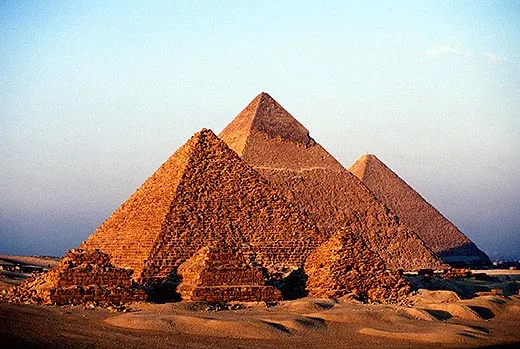
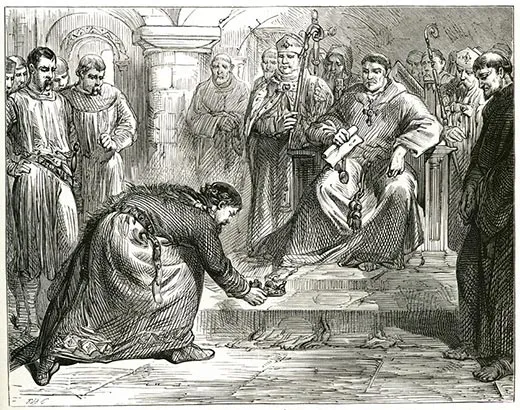
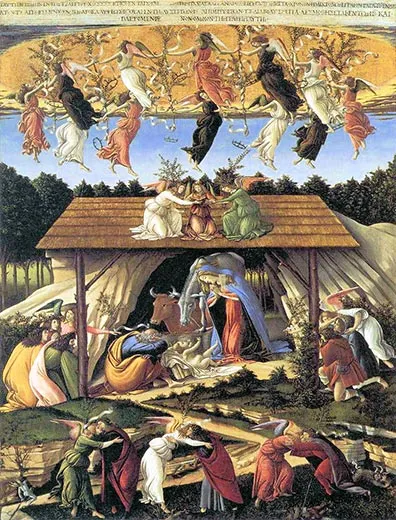
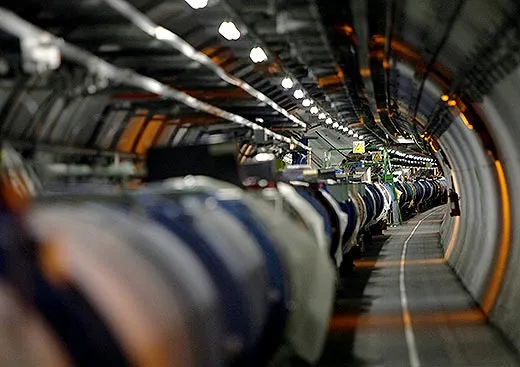
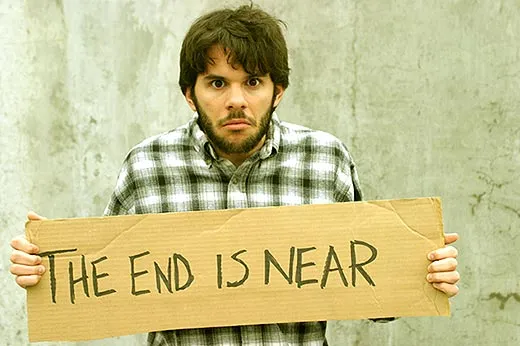
/https://tf-cmsv2-smithsonianmag-media.s3.amazonaws.com/accounts/headshot/mark-strauss-240.jpg)